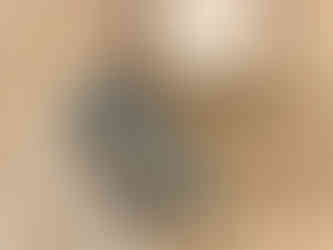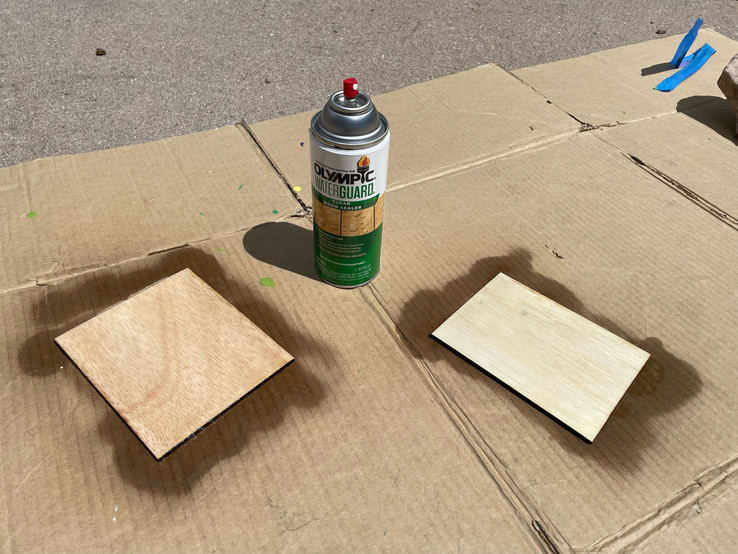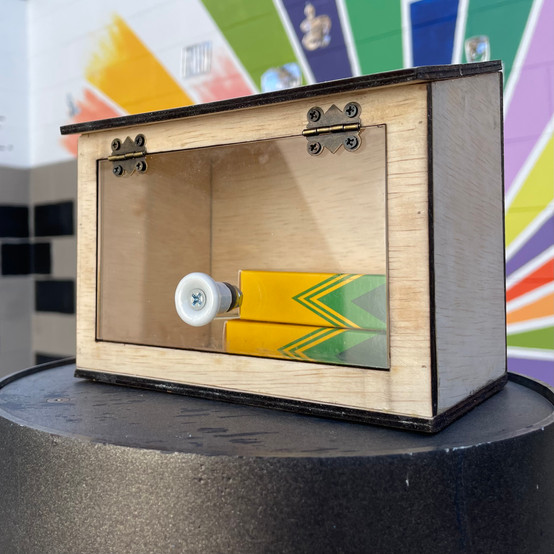Entry No. 10, April 14th, 2022, #NewWaysOfMakingArt
- Daniel Tossing
- Apr 17, 2022
- 3 min read
Updated: Apr 23, 2022

Over the past week I’ve been reminded of how significant the act of playing is for both the students and teacher in the art making process. My past teaching perspectives have usually focused on how important it is for the students to try something outside of their comfort zone, but I had not given much thought about the teacher also participating in a new art making processes with the class and how that might affect student’s learning, problem solving, and art making processes going forward.
The peer teaching experiences in Art 326 as both a student and teacher has opened me up to thinking about new methods of art making, art teaching, and how to incorporate those methods my classroom. For instance, in the past week I’ve rammed earth, built a sustainable garden sculpture out of trash, tried digital drawing on an iPad, and used a laser cutter to create a small functional box out of scrap shop materials. Outside of laser cutting, which I learned in my peer teaching lesson, all these art making techniques were new to me. Going forward, I am optimistic that I will be able to incorporate such ideas/techniques into my classroom.
Each peer teaching week to this point has changed my perceptions on how I want to run my classroom. The garden group gave our class a hint of what a choice-based classroom could feel like. I personally wanted time to do all the activities but was limited to one. How would I deal with this situation if all my students wanted to do each of the activities, but we were limited on supplies and time? Is the choice in this case a distraction? Are my students going to focus on what they could not do instead of what they are doing? Or will they understand that by having everyone do a different task the class will reach the end goal? It could be both or neither. Also, how could one teacher make all of this happen? They had three teachers running three, time consuming activities. Lots to think about going forward.
This week’s art piece is a continuation of my team’s peer teaching lesson and inspired by the four lessons we have attended since. Our teacher challenged my group to come up with an idea for how and where we should store chalk. The chalk paint portion of our mural is based on people writing on the mural year-round, so keeping the chalk accessible, visible, and dry is an integral part of the overall design.
After discussing the idea with our team, Nikki came up with the original sketches. Based on her sketches I drew to scale model drawings, piece by piece. This comes back to the ideas of playing and creating that I mentioned previously. I was not sure if I would be able to make anything work, but once I started, I was having fun and I was no longer afraid of failing. Once my drawings were complete, I scanned them, imported them into Adobe Illustrator, created vectors, imported those into Corel Draw, then the laser cutting software, and laser cut the wood and plastic pieces. After everything was cut, I sanded, and weather treated the wood to ensure that it would survive Colorado weather. Next, I met with Cecelia in the wood shop, and she walked me through where tools are stored and the assembly process. The entire process was very fun and educational.
Overall, I feel that the peer teaching experience as both a student and teacher has considerably influenced my understanding of teaching going forward. It has allowed me to see my teaching from multiple perspectives and will help me to formulate lesson plans in the future.




































Comments